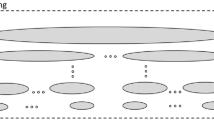Requirements analysis for an intrusion detection system (IDS) involves deriving requirements for the IDS from analysis of the intrusion domain. When the IDS is, as here, a collection of mobile agents that detect, classify, and correlate system and network activities, the derived requirements include what activities the agent software should monitor, what intrusion characteristics the agents should correlate, where the IDS agents should be placed to feasibly detect the intrusions, and what countermeasures the software should initiate. This paper describes the use of software fault trees for requirements identification and analysis in an IDS. Intrusions are divided into seven stages (following Ruiu), and a fault subtree is developed to model each of the seven stages (reconnaissance, penetration, etc.). Two examples are provided. This approach was found to support requirements evolution (as new intrusions were identified), incremental development of the IDS, and prioritisation of countermeasures.
Similar content being viewed by others
Author information
Authors and Affiliations
Additional information
Correspondence and offprint requests to: G. Helmer, Department of Computer Science, 226 Atanasoff Hall, Iowa State University, Ames, Iowa 50011, USA. Email: ghelmer@cs.iastate.edu
Rights and permissions
About this article
Cite this article
Helmer, G., Wong, J., Slagell, M. et al. A Software Fault Tree Approach to Requirements Analysis of an Intrusion Detection System . Requirements Eng 7, 207–220 (2002). https://doi.org/10.1007/s007660200016
Issue Date:
DOI: https://doi.org/10.1007/s007660200016




